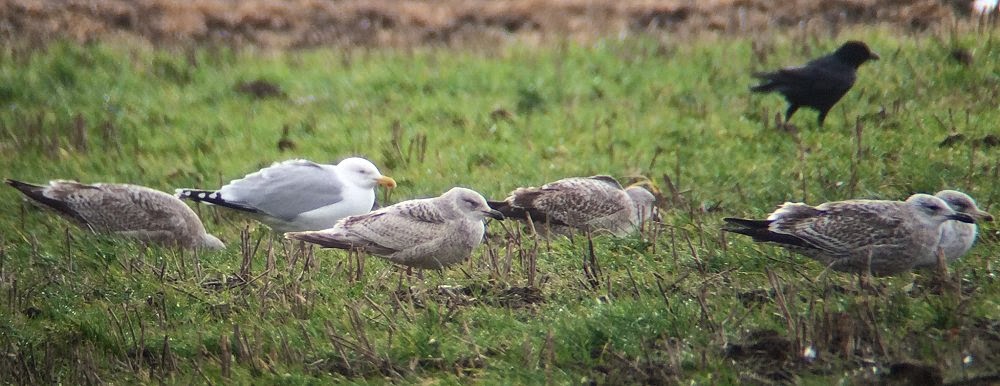 |
| "Can you tell what it is yet..." |
Fortunately the skies were greyer and the haze much reduced in the Midlands, and views of the gulls on Albert Village Lake were much better. I only had an hour as I had to get back home to pack the car for a family camping holiday, but the usual 2cy Caspian Gull was soon located, along with c20 michs. Many of the 2cy LBBs had now almost completed their primary moult, so I was hardly bothering to search for black primaries, instead trying to pick out a 2cy with a pink-based bill, to get better views of the previous week's Baltic.
Amazingly, after twenty minutes, I picked up such a bird: a small 2cy LBB-type with a two-tone, pink-based bill, a whitish head with streaked neck-sides, dark blackish-brown upperparts without much in the way of visible patterning, and those jet-black primaries. So far so good. I rattled off a few shots on my phone, but after less than two minutes, it flew. I tried to stay on it with the video, but unbelievably the phone rang, cutting off the recording! The perils of phone-scoping!
The bird had gone, and I was not much better off than before. I reviewed the video, and a smile crept across my face - it wasn't last week's bird, it was better than last week's bird! Like before, the secondaries and greater coverts showed no signs of moult, and there was a nick in the middle of the trailing edge of the wing resulting from missing feathers. But this bird's nick was bigger: P2 was missing and P1 was nearly 3/4 grown, a dark grey-black feather with a broad white tip, a 3rd-generation primary. So it was slightly ahead of the previous bird (but a week on, so maybe not that much more advanced), but it was what was going on at the other end of the primaries that had made me smile: the 2nd-generation P10 was only half grown, indicating that the juvenile outer primary had only recently been shed, so there were two simultaneous moult-waves going on! Staffelmauser!
 |
| montage of videograbs showing the happy news: Staffelmauser! |
This moult pattern has never been recorded in (ringed) western LBBs, and indeed it is considered that any 2cy that has shed P1-3 by August can be considered an acceptable fuscus. But does that mean any will get accepted...?!
























































